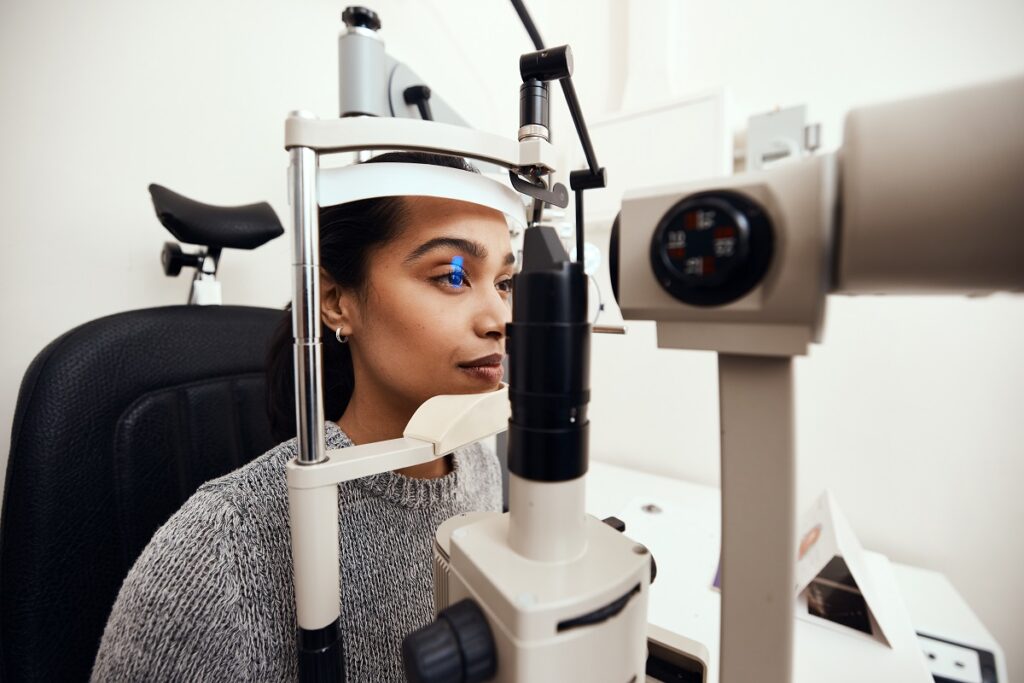Why Picking an Eye Doctor Optometrist is Essential for Your Eyes
Why Picking an Eye Doctor Optometrist is Essential for Your Eyes
Blog Article
Exploring the most recent Technological Developments in Optometry and What They Mean for Optometrists
From the accuracy of Optical Coherence Tomography to the nuanced understandings supplied by AI-driven diagnostic tools, these technologies are setting new criteria in patient evaluation and therapy. As these advancements penetrate the technique, optometrists are faced with the obstacle of welcoming these tools to enhance person outcomes.
Developments in Diagnostic Equipment
Advancing the field of optometry, developments in diagnostic devices have actually reinvented the method eye care professionals analyze and diagnose eye conditions and visual problems. The previous decade has actually experienced considerable technological advancements, making it possible for even more detailed and accurate evaluations.
One more trick advancement is the introduction of innovative corneal topography systems, which map the surface curvature of the cornea with accuracy. These devices are particularly valuable for fitting get in touch with lenses and diagnosing corneal conditions. Digital retinal imaging has actually changed traditional ophthalmoscopy, providing in-depth, breathtaking views of the retina that promote comprehensive visual assessments.
The development of wavefront aberrometry has likewise been critical, allowing the analysis of refractive mistakes with unparalleled accuracy (Optometrist Chino). This technology aids in tailoring corrective lenses and enhancing surgical outcomes for refractive surgical treatments. Collectively, these diagnostic improvements equip eye doctors to provide remarkable individual treatment, making sure very early intervention and tailored treatment strategies, ultimately improving visual health outcomes
AI in Patient Management
Building on the structure of sophisticated analysis tools, the consolidation of synthetic intelligence (AI) in client administration represents a transformative jump for optometry. AI systems are increasingly used to enhance performance, accuracy, and customization in individual treatment. By examining substantial quantities of information, AI can identify patterns and anticipate prospective ocular problems, enabling optometrists to customize treatments much more efficiently. This ability is crucial in handling chronic eye conditions such as glaucoma and diabetic retinopathy, where early discovery and continuous surveillance are crucial.
Moreover, AI-driven systems facilitate structured person interactions and management processes. Automated organizing, virtual examinations, and personalized follow-up strategies not only enhance patient satisfaction however also enhance time monitoring for specialists. These systems can triage people based on the seriousness of their problems, ensuring that those in important need get punctual focus.
Additionally, AI improves decision-making by giving optometrists with evidence-based suggestions and therapy paths. By incorporating data from digital wellness records, AI tools offer insights that inform scientific choices, reducing the risk of errors and enhancing individual end results. As AI remains to develop, its function in individual management will likely expand, reshaping the landscape of optometric care.
Developments in Retinal Imaging
In the world of optometry, retinal imaging has actually seen amazing technological advancements that are boosting analysis capabilities and patient treatment. Advancements such as Optical Comprehensibility Tomography (OCT) and fundus photography have changed just how optometrists examine the retina and visualize.
Boosted imaging modalities like OCT angiography are more refining diagnostic precision. Eye Doctor. look these up Such advancements facilitate the identification of min retinal modifications that might symbolize disease progression.
Furthermore, developments in artificial intelligence are increasing retinal imaging by making it possible for automated analysis of big datasets. These systems aid optometrists in identifying patterns indicative of pathology, consequently boosting diagnostic accuracy and effectiveness. Jointly, these technologies are changing retinal imaging into a cornerstone of contemporary eye treatment, boosting end results and expanding therapeutic possibilities.
Teleoptometry's Growing Function
Teleoptometry is increasingly ending up being a crucial element of eye care, driven by innovations in electronic communication and diagnostic devices. This is especially useful in underserved and country locations where access to specialized eye care is usually restricted.
The combination of man-made intelligence (AI) further boosts teleoptometry, enabling the evaluation of aesthetic information and assisting in the discovery of ocular problems such as glaucoma and diabetic retinopathy. AI-powered formulas can rapidly interpret complicated imaging data, giving optometrists with beneficial insights that bolster scientific decision-making.
Furthermore, teleoptometry sustains continuity of treatment through smooth integration with digital health documents (EHRs), allowing eye doctors to preserve comprehensive individual histories. When seeking advice from with different professionals., find out this here this ensures that individuals obtain personalized and consistent treatment even.
In spite of these benefits, obstacles remain, including guaranteeing information security and managing client assumptions. Teleoptometry represents a considerable stride in the direction of even more obtainable, efficient, and patient-centered eye care. As innovation progresses, its function is positioned to increase better.

Future Trends in Eye Care
A myriad of innovative trends is set to reshape the future of eye care, driven by technological developments and the progressing demands of people. One significant pattern is the combination of synthetic intelligence (AI) in diagnostics, which promises to boost the accuracy and effectiveness of eye evaluations. AI algorithms can analyze huge quantities of data from retinal images, potentially spotting conditions like diabetic person retinopathy and glaucoma earlier than standard techniques.
Moreover, personalized medication is getting traction in optometry, with hereditary testing informing tailored treatment strategies. This technique aims to optimize person results by customizing treatments to individual hereditary profiles. Wearable technology, such as clever contact lenses, is additionally coming up, supplying real-time tracking of intraocular stress or glucose degrees, therefore providing continual insights right into ocular and systemic health.
The adoption of increased truth (AR) and digital reality (VIRTUAL REALITY) in training and patient education and learning is another arising fad. These innovations supply immersive experiences that can improve understanding and abilities both for patients and eye doctors. As these trends progress, optometrists have to remain abreast of technological advancements to supply advanced treatment, making certain enhanced individual outcomes and complete satisfaction in the vibrant landscape of eye treatment.
Final Thought

Jointly, these analysis developments encourage optometrists to deliver remarkable client treatment, guaranteeing very early intervention and customized therapy techniques, eventually improving aesthetic health and wellness outcomes.

As these innovations continue to develop, eye doctors must adapt and include them right into practice, inevitably enhancing operations efficiency and boosting the Continue requirement of eye treatment delivered to people.
Report this page